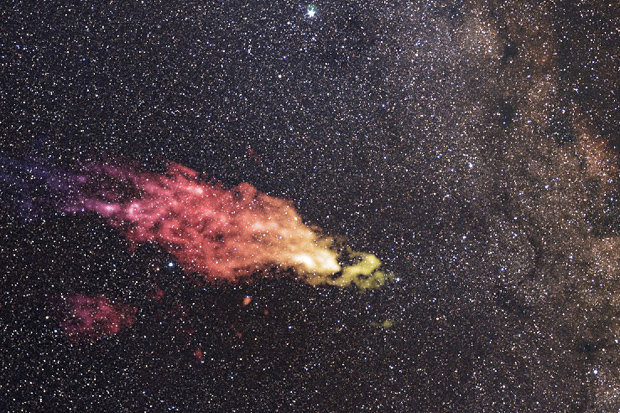 NASA has released a new video on the notorious Smith Cloud, a high-velocity cloud that is expected to crash into the Milky Way in about 30 million years.
NASA has released a new video on the notorious Smith Cloud, a high-velocity cloud that is expected to crash into the Milky Way in about 30 million years.
The cloud has a mass of 2 million Suns and is moving at 310 kilometers (193 miles) per second. It was first discovered by astronomer Gail Smith in 1963, and for many years it was considered just one of the several high-velocity clouds around the Milky Way.
This idea changed in the mid-2000’s when astronomers looked at the Smith Cloud with the Green Bank radio telescope in West Virginia, and discovered that it was on a collision course with our own galaxy.
Suddenly, we know where it is going but not where it came from, so in the last few years, astronomers looked into its potential origin. Their findings were published early this year.
“There are two leading theories,” Andrew Fox, an astronomer at the Space Telescope Science Institute who led the research, said in the video. “One is that it was blown out of the Milky Way, perhaps by a cluster of supernova explosions. The other is that the Smith Cloud is an extra galactic object that has been captured by the Milky Way.”
The team used the Hubble Space Telescope to carefully analyze the light absorbed by the cloud. Thanks to this technique, they were able to estimate the abundance of different elements in the Smith Cloud. The scientists discovered that the abundance of sulfur in the cloud is similar to the abundance of sulfur in the outer disk of the Milky Way, suggesting that the first hypothesis is the correct one.
“The cloud appears to have been ejected from within the Milky Way and is now falling back,” Fox added. “The cloud is fragmenting and evaporating as it plows through a halo of diffuse gas surrounding our galaxy. It’s basically falling apart.”
Although it’s losing pieces, the cloud will still be quite big when it hits our galaxy in the future. The Smith Cloud will not cause any damage, but astronomers expect that its large gas reservoir will be compressed and turned into many new stars as it re-enters our galaxy.
